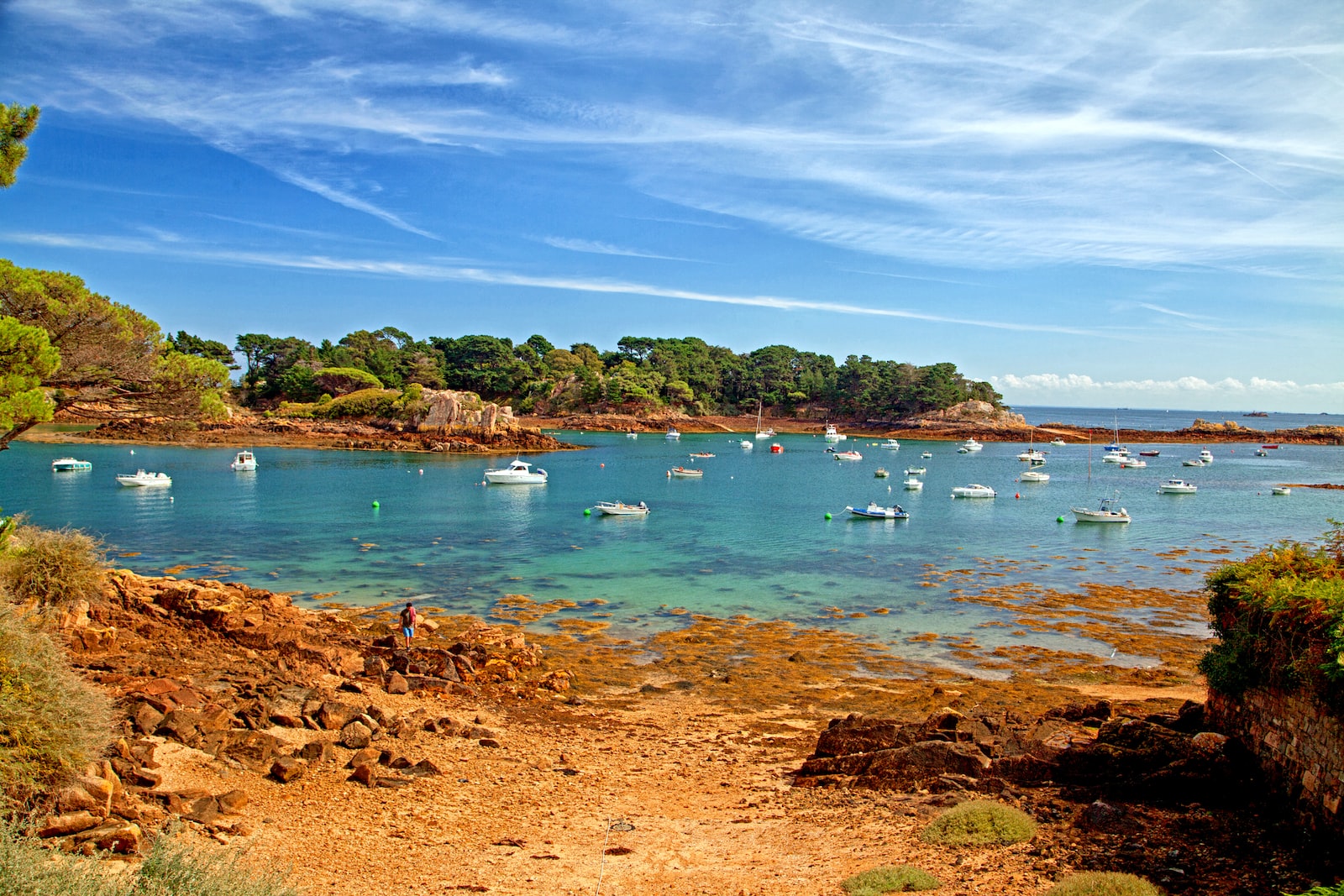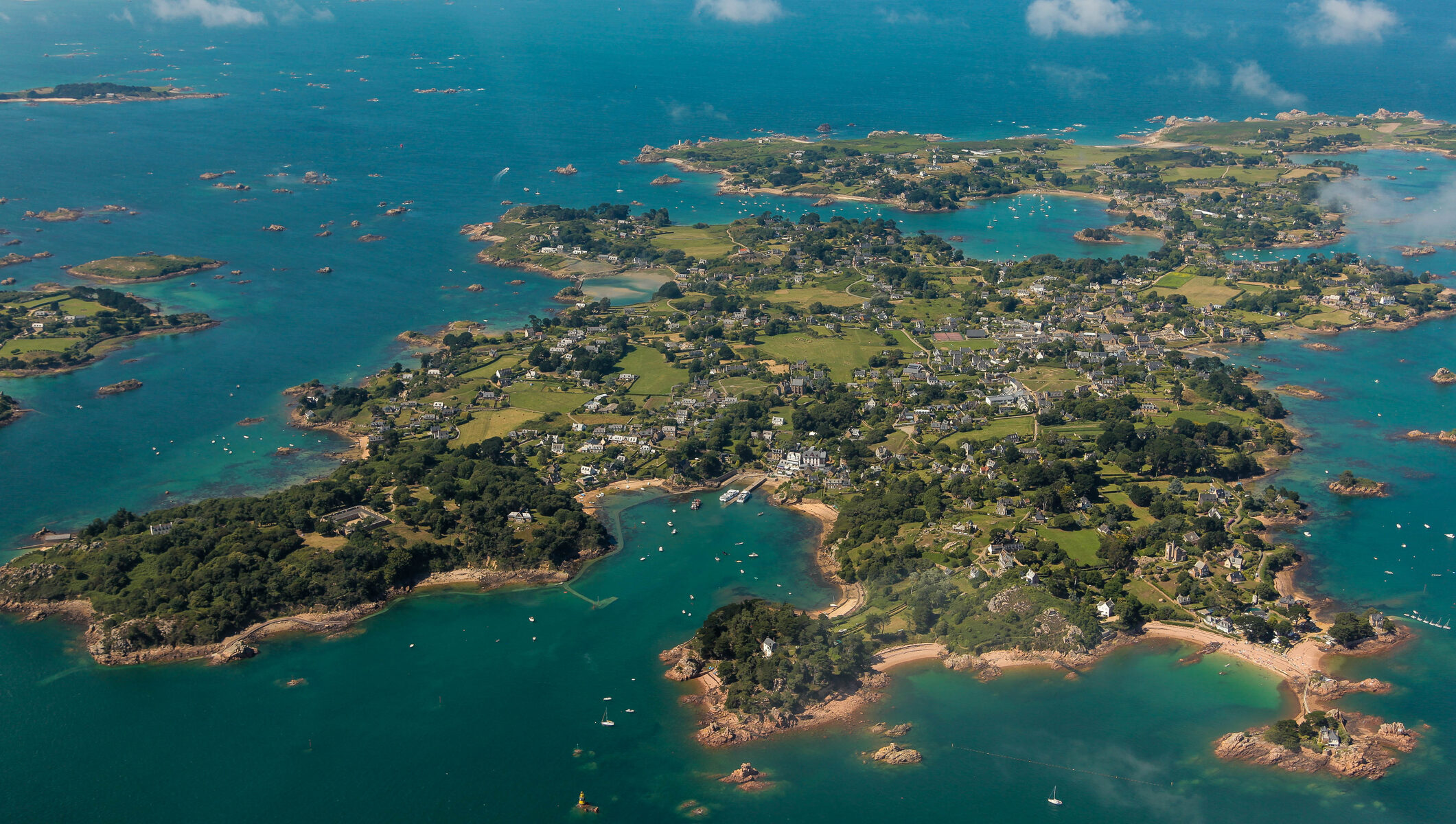THE ISLAND OF BREHAT
The Bréhat archipelago comprises the main island and 86 neighbouring islets and reefs. On 13 July 1907, Bréhat became France’s first listed natural site!
3.5 kilometres long and 1.5 kilometres wide, the island is accessible by boat and can be visited on foot or by bike. Arriving on the island via the landing stage, take the paths off the main streets that link the port to the Peacock lighthouse. You’ll discover a multitude of coves, beaches and shelters for lost sailors.
To discover the island, opt for spring and autumn: there are fewer visitors, the weather is mild and nature is lush.
All year round, the archipelago benefits from the influence of the Gulf Stream, which ensures a particularly mild microclimate in winter. The island is dotted with many varieties of flowers, including exotic plants such as agave and echium, and flowers such as hydrangea, mimosa, mulberry, eucalyptus, aloe and camellia.
But the flower that most symbolises Bréhat is the agapanthus, which blooms from April to September and brightens up the paths with its soft shade of mauve-blue.
As you explore Bréhat, you’ll discover a rich and varied heritage that bears witness to the island’s maritime and military history.
In fact, it provided the French crown with a number of privateers who wreaked havoc in the Atlantic. On land, there are monuments such as the Pont ar Prad, (a bridge) built by Vauban to link the two islands that make up Bréhat, and a citadel that is now home to the Verreries de Bréhat glassworks.
Like many ports in the Costarmoric region, the port of La Corderie was the departure point for a fleet of Newfoundlanders bound for the Newfoundland seas to fish for cod and whales.The Bonaventure was the first ship known in Europe to return from Newfoundland with its holds full of cod in 1508, 16 years after Christopher Columbus ‘discovered’ the Americas.




